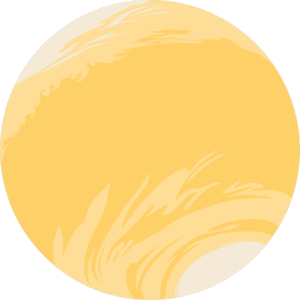The Downlink • Oct 13, 2023
Syzygy + apogee = majesty
Space Snapshot

Get ready for tomorrow’s annular eclipse! More than a billion people living in North and South America will be treated to either an annular or partial eclipse. Learn more about this kind of eclipse, find out what will be visible in your area, and if you live elsewhere in the world check out a live stream of the eclipse. Pictured: An annular eclipse seen through a solar telescope in 2014. You can see solar prominences erupting from the Sun’s surface. Image credit: Stefan Seip/NASA.
You love space, now take action
This weekly newsletter is your toolkit to learn more about space, share information with your friends and family, and take direct action to support exploration. Anyone can subscribe at planetary.org/connect to receive it as a weekly email.
Mission Briefings


OSIRIS-REx’s asteroid sample contains carbon and water. Initial studies of the samples of the 4.5-billion-year-old asteroid Bennu, which were returned to Earth by the OSIRIS-REx spacecraft in September, show evidence of water and large amounts of carbon. This could indicate that the asteroid contains the same building blocks that make life on Earth. Hear more about the mission from Danny Glavin, OSIRIS-REx co-investigator, on this week’s Planetary Radio. Pictured: A view of the outside of the OSIRIS-REx sample collector. Image credit: NASA/Erika Blumenfeld & Joseph Aebersold.

Japan’s SLIM spacecraft has completed a flyby of the Moon. The Smart Lander for Investigating Moon (SLIM) lander made its closest approach to the Moon on Oct. 4. The spacecraft is now on an orbit that will bring it back to the Moon later this year, when it will attempt a landing.
From The Planetary Society


As technology advances, exoplanets are a new hot spot for the search for life. Techniques for studying planets around other stars are advancing all the time. Along with those advancements come new ways to look for possible signs of life on those planets. Learn more about how astronomers search for alien life on exoplanets. Pictured: An artist’s concept of exoplanet K2-18 b, where researchers think they might have found signs of potential biosignatures methane and carbon-dioxide. Image credit: NASA et al.

We’re searching for alien life, but are aliens searching for us? SETI (the search for extraterrestrial intelligence) involves looking for signals sent from advanced beings beyond our Solar System, whereas METI (messaging extraterrestrial intelligence) takes it a step further, actively sending signs of our existence out into the Universe. Learn more about how we do SETI and METI, and what it might mean to our species if we succeed.
What's Up

Yellowish Saturn is still hanging out high in the evening sky, with the bright star Fomalhaut below it. Very bright Jupiter rises in the early evening east, getting higher in the sky throughout the night. Super bright Venus is in the predawn east. And don’t forget to check out the annular eclipse! Learn more in our roundup of October’s night skies.
Wow of the Week

This beautiful series of swooping lines shows the frustrated efforts of a glitching spacecraft. ESA’s Euclid space telescope, which launched in July to study dark energy and dark matter by observing the acceleration of distant galaxies, ran into trouble when its Fine Guidance Sensor failed to lock onto guide stars. Pictured are loopy star trails showing the effect of Euclid’s Fine Guidance Sensor trying and failing to hold onto its guide stars. Thankfully, the sensor is now operating correctly after a software patch. Image credit: ESA.
Send us your artwork!
We love to feature space artwork in the Downlink. If you create any kind of space-related art, we invite you to send it to us by replying to any Downlink email or writing to [email protected]. Please let us know in your email if you’re a Planetary Society member!


 Explore Worlds
Explore Worlds Find Life
Find Life Defend Earth
Defend Earth


